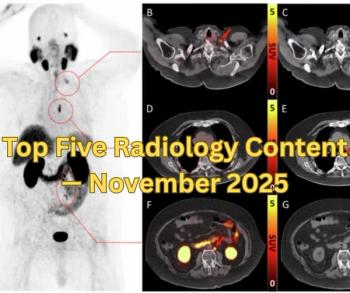
- Diagnostic Imaging Vol 32 No 5
- Volume 32
- Issue 5
FDG-PET/CT identifies aortic dissection
PET/CT imaging with FDG can identify when a tear in the wall of the aorta causes blood to flow between the wall's layers and forces the layers apart, according to research.
PET/CT imaging with FDG can identify when a tear in the wall of the aorta causes blood to flow between the wall's layers and forces the layers apart, according to research.
Many conventional forms of imaging are unable to distinguish between acute and chronic dissection, according to the study, published in the May Journal of Nuclear Medicine. Differentiating acute and chronic dissection can alter the course of treatment, meaning rushing the patient to surgery or using beta blockers to lower blood pressure.
Acute dissection of the aortic wall leads to elevated metabolic activity in newly lacerated segments of the aortic wall, while stable chronic aortic dissection showed no increased metabolic activity (2010;51:686-691).
In the same issue of JNM, Japanese researchers found that greater metabolic activity in acute aortic dissection was significantly associated with increased risk for rupture and progression (2010;51:674-681).
Articles in this issue
over 15 years ago
Health reform is one thing, but legislators are not physiciansover 15 years ago
Breast surgeons to tackle screening mammographyover 15 years ago
Tips for relieving workstation strainover 15 years ago
Nothing wrong with techs seeking a 'time out'over 15 years ago
Multidetector CT reveals diverse variety of abdominal herniasover 15 years ago
Watch out if depression doesn't show up on x-rayover 15 years ago
How to get the gain without the pain in shift to 3T MRover 15 years ago
Shearwave elastography improves breast lesion Dxover 15 years ago
Breast-specific gamma scans monitor chemoover 15 years ago
Cardiac imaging system reduces scan timeNewsletter
Stay at the forefront of radiology with the Diagnostic Imaging newsletter, delivering the latest news, clinical insights, and imaging advancements for today’s radiologists.



























